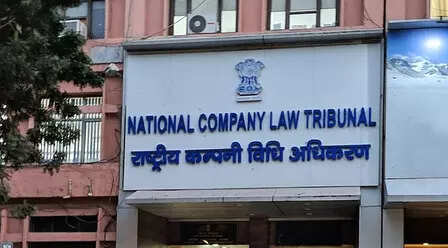Dear Readers,
Did you notice the buildings lit up in our tricolour? Offices, airports, railway stations, and government buildings, especially the stock exchanges and RBI in Mumbai, looked beautiful. Patriotic songs must have filled your society, and schools probably held Independence Day functions with marching
bands playing in the background. Such celebrations are always heartwarming. At our office, many colleagues sang patriotic songs, and it was a lovely gathering. I wish you all a very happy Independence
Day.
Since many of you might have been away on vacation during the three-day weekend, Iâll keep my note short and focus on something that matters to finance professionalsâthe latest updates on the Insolvency and Bankruptcy Code or IBC.
What has changed in IBC?
This week, Finance Minister Nirmala Sitharaman introduced the IBC bill in Parliament, and it has now been referred to the Senate committee for further discussion. The bill mandates a 14-day admission period for the resolution process and includes a framework for handling cross-border issues. It aims
to resolve stressed assets efficiently and faster, which would benefit both creditors and debtors, as delays often cost a lot of money. While there are many good provisions in the bill, I feel there
is still a long way to go to make the IBC truly effective.
Professionals in the field are happy with some of the changes, but I strongly believe that stakeholders should see the IBC as a working mechanism rather than just a set of deadlines. There is little point in setting deadlines if they are not honoured. If the appointment of NCLT benches remains slow,
cases cannot be resolved, no matter how strict the timelines are.
The IBC trajectory
Looking back, the success rate of IBC has been better than older mechanisms like SICA and DRT. The Code shifted responsibility onto the debtor and gave more power to the creditor. Yet, despite timelines and clear guidelines, problems have persisted. Some were technical, some involved disputes, and a
few arose from limited manpower at NCLT benches. Because of these issues, the average time to resolve cases stretched to 434 days, far above the 180 plus 90 days originally defined.
Recently, after the SC verdict on the BPSL insolvency case, on which I also wrote, experts, bankers, and professionals were hoping for an IBC overhaul.
Focus on building a credit
culture
I also feel this is an opportunity for banks and lenders to build a stronger credit culture. When corporate lending is low and balance sheets are clean, it is the right time to focus on genuine businesses and encourage new ventures. Historically, consortium lending during booming times has often
favoured certain industries, which has led to mistakes. Lenders need to honour credible entrepreneurs and rely on their own assessments. Many bankers rely on the investment banker's due diligence, who i
s representing the debtor.
An investment banker once told me that PSU bankers used to expect favours while disbursing loans, but debtors are many times not in a position to
oblige.
Resolution versus liquidation
In recent years, many companies, including some of the RBIâs âdirty dozen listâ, were brought to NCLT not to resolve but to liquidate. Large assets were sometimes sold at throwaway prices, with banks taking haircuts as high as 90 percent in some cases, like Videocon. So the lenders have to
decide whether they have to get away with the asset, liquidate it, or obtain better value and resolve it. The lines are still blurred here, and such blurriness keeps hopes high for a few stakeholders. T
he focus should always be on resolution to extract maximum value rather than rushing to recover assets.

Cases like BPSL, where the Supreme Court cancelled a deal, show how mixed priorities have created confusion and negative outcomes. Ideally, the focus from lenders should have been on resolution, but they focused on recovery, which led to many contradicting orders in similar cases with similar banks.
This created a negative impact on the IBC as a whole. With big cases like Jet Airways and Lavasa still pending, it is clear that a stronger and more consistent process is needed.
While I hope the amendments and new provisions will make a real difference, the true impact will only be seen as the process unfolds. If every case ends up in the Supreme Court, then only legal entities benefit, reminding us of the saying, âIn a gold rush, those who sell shovels make more
money.â
Lastly, I want to mention that last week, due to technical reasons, the editorial note could not be sent with the newsletter. It was published only on ETCFO, our sister vertical. You can read it
here.
As usual, I am adding here the top 5 stories of the week, trust you will find them meaningful.
-
With big NBFCs thriving, do top Indian corporates still want a banking licence?
-
Cybersecurity biggest risk for banks; PNB allocates Rs 400 Cr for defense, says ED Paramasivam
-
Public sector banks have about 32,000 posts vacant, SBI leads
-
NUCFDC nears Co-operative Bank SRO status, raises Rs 273 Crore of Rs 300 Crore target
-
IBC 2025: Whatâs in the bill, how it tackles delays, why capacity will decide gains
Happy Reading
Amol Dethe,
Editor,
ETBFSI
(Editor's note is a column written by Amol Dethe, Editor, ETBFSI.
Click here to read more of his articles exploring several buzzing topics)